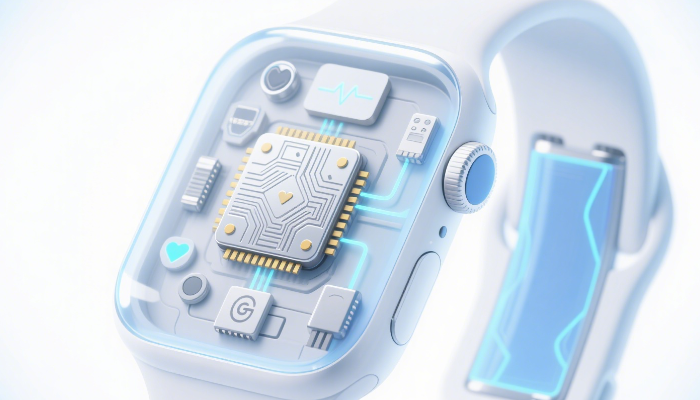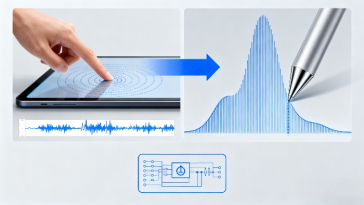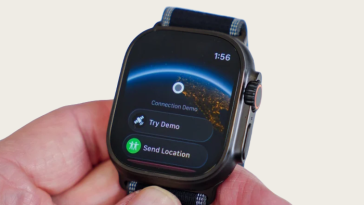Smartwatches are an engineering marvel that combine advanced chipsets, a multitude of sensors, and innovative battery technologies within a compact form factor. Their evolution is shaped by a constant tug-of-war between performance, functionality, and endurance. In this post, let’s break down how leading chipsets balance data processing with power efficiency, the vital role of sensors and multi-sensor fusion, and the ingenious strategies driving longer battery life.
Chip Technology: Heart of Processing Power vs. Power Consumption
The chipset serves as the brain of any smartwatch, dictating not only raw processing power but also the device’s energy consumption, user experience, and scope of features.
Apple S Series: Incremental Efficiency
The freshly announced Apple S11 chip powers the 2025 Apple Watch Series 11, Ultra 3, and SE 3. Rather than chasing major speed records, Apple has maintained its S10 core design, focusing instead on subtle improvements in efficiency and integration. The priority is on advanced health features (like sleep tracking and hypertension alerts powered by a more capable neural engine), while also preserving the standard 18-hour runtime beloved by users. This means users can expect a reliably smooth experience with minor battery optimizations—especially in features like always-on display. The S11 also improves connectivity with a new MediaTek modem hinting at upcoming satellite communications, instead of solely chasing CPU benchmarks.1
Qualcomm Snapdragon W Series: Big Jumps in Performance and Efficiency
The Snapdragon Wear W6 signals a generational leap. Built specifically for wearables (not repurposed from smartphones), it features a high-performance Cortex-A78 core for intensive tasks and four Cortex-A55 cores for energy-efficient background operations. This design enables smartwatches to handle heavier applications faster while still conserving power during light use. Upgraded LPDDR5X memory increases responsiveness and multitasking. Smarter control of background apps and improved multitasking are expected to translate directly into longer battery life and a much smoother user experience.2
Sensor Technology: The Building Blocks of Smarter Wearables
Modern smartwatches leverage a wide array of sensors to deliver rich health and activity data. The main components include:
- Heart Rate Sensor (PPG): Uses photoplethysmography—light pulses through the skin and measures reflection—to continually track your pulse, spot irregular rhythms, estimate blood pressure trends, and more.3
- Accelerometer: Measures movement and acceleration, enabling step counting, calorie estimation, and motion detection.
- Gyroscope: Measures rotational movement to enhance sport tracking, step accuracy, and orientation-based features.
- GPS: Tracks precise location, essential for distance and pace during outdoor activities.3
- Barometer: Measures altitude and atmospheric pressure for hiking or climbing data.4
Crucially, these sensors work together, not alone.
Sensor Fusion: Precision through Collaboration
The real magic begins when smartwatches combine data from multiple sources—a process called multi-sensor fusion. By integrating readings from accelerometers, gyroscopes, heart rate sensors, and GPS, modern wearables generate far more reliable and precise metrics. Advanced algorithms, such as Kalman filters and machine learning systems, identify noise, correct inaccuracies, and fill in gaps, enhancing the reliability of health monitoring (like heartbeat and respiration) while minimizing false readings. This enables more accurate detection of arrhythmia, sleep apnea, exercise quality, and even predicting potential heart issues.5
The Battery Challenge: Capacity, Chemistry, and Smart Power Management
Battery life is the final battleground for smartwatches, as users expect more features without constant charging.
Battery Capacity and Materials
Current smartwatches mostly use lithium-ion and lithium-polymer batteries, but the industry is shifting toward solid-state batteries and innovative materials like silicon-graphene composites. These advances promise higher energy density (more power per gram), improved safety, and smaller sizes—all key in slim wrist devices. Fast-charging and wireless technologies are becoming commonplace, reducing charge anxiety for users.6
Low Power Strategies: Smart Design for Real Life
Power-saving is not only about the battery but also about how the device uses it:
- Dynamic screen refresh rates—the watch ramps up display speed only when actively used.
- Adaptive sensor sampling—sensor measurements are taken less frequently when possible (for instance, during sleep), drastically reducing consumption.
- Advanced power management ICs use AI to analyze user behavior, further optimizing when and how energy is spent.
Together, these tactics help ensure that even as features multiply, battery life stretches further, remedying one of the main user pain points: endurance.
Conclusion
Smartwatch hardware is born from a technological balancing act. State-of-the-art chipsets like Apple’s S11 and Qualcomm’s Wear W6 focus on subtle efficiency gains as much as speed. Sensor arrays and multi-sensor fusion unlock new horizons in health and fitness insight. Battery breakthroughs and clever management fight the ever-present specter of “battery anxiety.” As these disciplines converge, the wearable experience becomes not only smoother and more capable but also less intrusive—supporting our lives seamlessly, all day long.
- https://www.webpronews.com/apple-watch-2025-s11-chip-enhances-efficiency-ai-and-connectivity/
- https://www.gizchina.com/2025/07/13/qualcomms-snapdragon-wear-w6-promises-big-upgrades/
- https://getlifewatch.com/blogs/news/the-science-of-modern-wearable-smartwatches
- https://timesofindia.indiatimes.com/gadgets-news/explained-five-main-sensors-on-smartwatches-and-what-they-do/articleshow/97131602.cms
- https://arxiv.org/html/2412.05895v1
- https://www.linkedin.com/pulse/splendid-growth-smartwatch-battery-market-2025-expansion-bhcaf/





 No products in the cart.
No products in the cart.